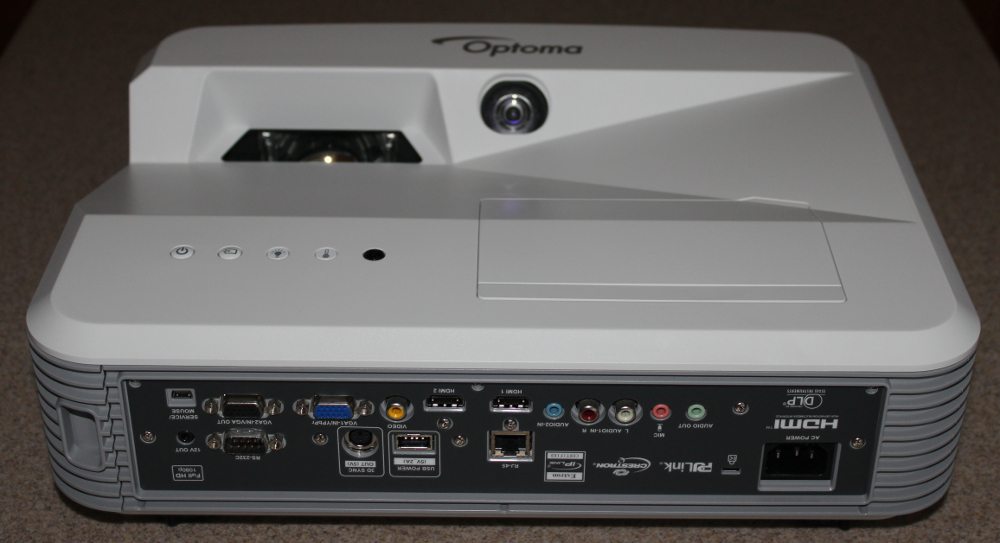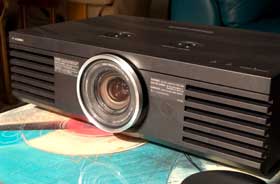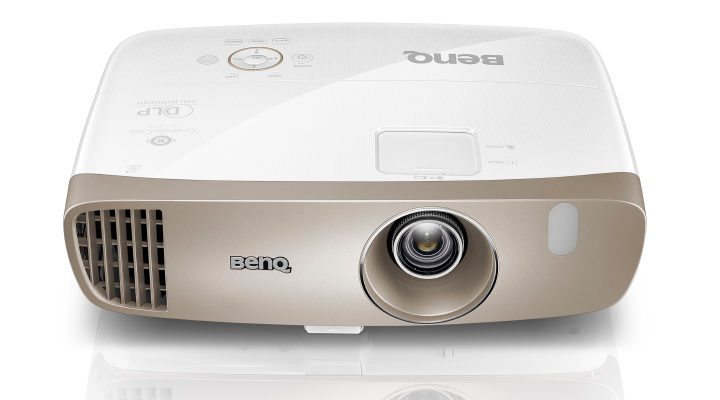Panasonic PT-AE4000 Projector Overview
If you are looking for a reasonably affordable home theater projector - one that looks great, with excellent color, black levels, shadow detail, one with superb placement flexibility, and respectable brightness, then you've found the right review. Welcome to the Panasonic PT-AE4000 projector.
The PT-AE4000 projector receives one of our Hot Product Awards, not for any one capability or strength, but for being a truly excellent value, while at the same time, be one of the most feature laden home theater projectors on the market.
This year's Panasonic entry, the PT-AE4000 debuted at just $1995 MAP (minimum advertised price), surprising most folks. That's $500 less than the PT-AE3000 last year, and you get a better projector to boot. Impressive considering that the US dollar is so weak, which helps hold prices up.
The Panasonic PT-AE4000 as noted is loaded with features. It has a motorized 2:1 zoom lens for great placement flexibillty. It offers a Lens Memory feature with effectively acts as an anamorphic lens emulation.
Perhaps the most notable improvement in this year's Panasonic, is a significant boost in the best mode brightness. Previous Panasonic's have been well below average in brightness. This year, the Panasonic gains a lot, and is now pretty average - still a little on the low side, but way up from last year. Panasonic is touting a new lamp design, with a stronger red component (better matches the 6500K standard), to provide that extra brightness in best mode. That lamp doesn't improve the projector's brightest mode's measured brightness, by any noteworthy amount.
DLA-PT-AE4000 Projector - Special Features
Panasonic brings back last year's novel Lens Memory feature, and improves on it.
Here's the scoop. As most of us know, most movies are in "Cinemascope" format - roughly 2.35:1 (there are 2.37:1, 2.40:1 and other varieties, but 2.35:1 is the most common). Since home theater projectors are 16:9 ratio (1.78:1), you get a letterbox above and below the image on the screen, if you have a 16:9 screen as most of us do.
With the Lens Memory feature, you can instead purchase a 2.35:1 screen instead, and when watching those movies, voila' no letterbox. Keep in mind that there are trade-offs. You would then get letterboxing on the left and right if watching 16:9 (HDTV) and standard TV (4:3).
Before I get into more detail, I said the lens memory feature has been improved. With the PT-AE4000, the Lens Memory system can be automated, so that the projector automatically senses the aspect ratio of the source material, and will automatically adjust. Quite honestly I hardly used the feature (don't have a 2.35:1 screen), to test how reliable it is, but, hey, even if it can't spot every aspect change, you can always pick up the remote, and press a button or two.
The thing is this - the Panasonic is a 16:9 device - with 16:9 LCD panels. As such, the projector is still putting out light into a 16:9 area. What that means is that when you are filling your 2.35:1 screen with a movie, the letterboxing will be there, but above and below the screen surface - hitting your walls or drapings. If your walls aren't dark, you'll be able to make out the letterboxing on those walls. If your walls are fairly dark, like my rust colored walls, there's no real problem.
When you do want to watch 16:9 or 4:3 content, the projector zooms out a bit, so the taller vertical image still stays within the narrower relative height of a 2.35:1 screen.
For those wanting to go 2.35:1 screen, this is a nice solution, and far less expensive than buying an anamorphic lens, or, an anamorphic lens and motorized sled. That means no extra cost, compared to roughly $2000 to $4000, extra.
Like when using an anamorphic lens, you are, however giving up true pixel to pixel mapping on 1080 resolution content, which means a very slight loss of sharpness/detail.
When you do use an anamorphic lens, however, you use all of the projector's pixels with the actual image, not the letterbox. As a result, for the same size image, using a real lens, vs. the Lens Memory feature, means about 25% more pixels in use, and therefore 25% more brightness.
Panasonic Red Rich Lamp
Panasonic is manufacturing a new lamp for the PT-AE4000. They claim this lamp has a native color temperature much lower than the traditional UHP (ultra high pressure) lamps used in most projectors. A lower color temp means more red. By starting with a lamp, with a greater red component, this means not having to sacrifice as many lumens to lower the temp to the proper red levels. The end result is that the PT-AE4000 gets a significant boost in lumens in best modes.
Dynamic Features: Sharpening, CFI
Detail enhancement: Panasonic's Detail Clarity feature does add some apparent detail or sharpness. It is a dynamic system, and there will be some tradeoffs. I find the 2 setting to be nice and safe, it adds very little, but there is also no discernable noise or artifacts added. As you up it from there, the image starts appearing noticeably sharper, but with it, there is an expected increase in noise and contrast in the image. This is all about what we should expect. Use judiciously. I like the 2 setting. Three starts some real changes, but by the time you get to 4 and 5 there is not only more noticeable sharpness, but also contrast and noise is definitely more visible. For me 4 worked nicely for viewing sports, and most high quality HD digital content (such as Discovery HD programming), but even for some of that digital content it was a bit too much.
PT-AE4000 Split Screen and Waveform Monitor
For those who really love to play with their projectors the Panasonic offers its own waveform generator, which, in conjunction with test patterns can be used to do much of the calibration. The monitor can let you view the full screen dynamics, or a single line. You can do white, or any of the primary colors.
The split screen ability allows you to do just that - split the screen to view "before and after" settings side by side. Much fun, and for those who like to eyeball settings, a real help.





